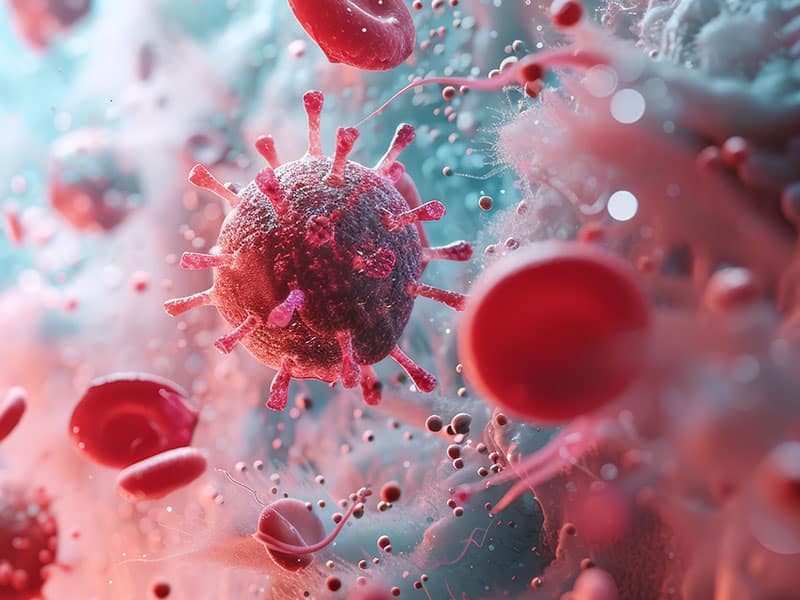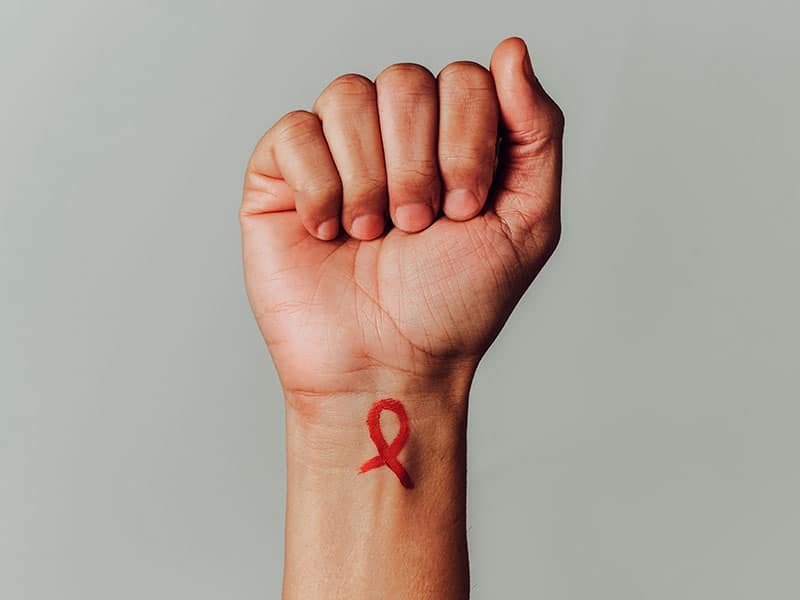Overview
Approximately every three minutes, one person in the U.S. is diagnosed with a type of blood cancer.
These conditions originate in the bone marrow or lymphatic system and disrupt the production and function of blood cells. They can weaken the immune system, reduce oxygen transport, and increase the risk of infection or bleeding. Some blood cancers progress rapidly, while others may develop slowly over time. Diagnosis and treatment often depend on the type and stage of the disease.
What Is Blood Cancer?
Blood cancer refers to a group of diseases that affect the formation and function of blood cells. In a healthy person, the bone marrow produces stem cells that mature into red blood cells, white blood cells, or platelets. These cells perform essential tasks such as carrying oxygen, defending against infection, and aiding in clotting.
In blood cancer, this process is disrupted. The body produces abnormal blood cells that do not function properly and may grow uncontrollably. These abnormal cells can accumulate in the bloodstream, bone marrow, or lymphatic tissues, replacing healthy cells and impairing normal blood function. Blood cancers are categorized based on the type of cells affected and the manner in which the disease develops.

Symptoms of Blood Cancer
Symptoms can vary depending on the type and stage of blood cancer. Some people experience mild or vague symptoms at first, while others may develop more noticeable signs as the disease progresses. Early symptoms are often mistaken for common illnesses, which can delay diagnosis.
Common symptoms include the following:
- Persistent fatigue
- Frequent infections
- Easy bruising
- Prolonged bleeding
Additional Symptoms:
- Unintentional weight loss
- Swollen lymph nodes
- Fever or night sweats
- Bone or joint pain
- Shortness of breath
- Pale skin
Types of Blood Cancer
There are several types of blood cancer, each affecting different blood cells and organs.
Leukemia
Leukemia is a type of cancer that affects the blood and bone marrow, resulting in the overproduction of abnormal white blood cells. These cells do not mature properly, which interferes with the development of normal blood cells. Leukemia is classified based on the speed of progression and the type of white blood cell involved.
Acute leukemias progress rapidly and often require urgent treatment, while chronic leukemias tend to develop slowly and may not cause symptoms in early stages. The main subtypes include acute lymphoblastic leukemia (ALL), acute myeloid leukemia (AML), chronic lymphocytic leukemia (CLL), and chronic myeloid leukemia (CML).
Data shows the rate of new cases of leukemia was 14.1 per 100,000 men and women per year
Lymphoma
Lymphoma originates in the lymphatic system and primarily affects lymphocytes, a type of white blood cell involved in immune defense. It is divided into two main categories: Hodgkin lymphoma and non-Hodgkin lymphoma.
Hodgkin lymphoma is characterized by the presence of Reed-Sternberg cells and typically follows a predictable pattern of spread.
Non-Hodgkin lymphoma includes a wide range of lymphoid cancers that vary in behavior, progression, and response to treatment. Government data found there were an estimated 80,620 new cases of this condition last year alone.
Multiple Myeloma
Multiple myeloma is a cancer of plasma cells, which are responsible for producing antibodies. In this condition, cancerous plasma cells multiply in the bone marrow and interfere with the production of normal blood cells. These abnormal cells can also release harmful proteins that damage bones and kidneys. Myeloma was found to affect an estimated 35,780 people last year.
Causes of Blood Cancer
The causes of blood cancer are not always clear, but several factors have been linked to its development. Most blood cancers originate from genetic mutations that alter the growth or division of blood cells. These mutations may occur spontaneously or in response to environmental or lifestyle-related factors.
Potential contributing factors include exposure to radiation, chemicals such as benzene, and certain chemotherapy drugs used to treat other types of cancer. Some infections, including the Epstein-Barr virus and human T-cell leukemia virus (HTLV-1), have also been associated with increased risk. Inherited genetic conditions may play a role in some cases, although most blood cancers are not directly passed from parent to child.
Risk Factors
Risk varies depending on the type of blood cancer, but several factors may increase the likelihood of developing the disease. These include:
- A family history of blood cancer
- Previous exposure to radiation or chemotherapy
- Long-term exposure to industrial chemicals such as benzene
- Certain viral infections, including Epstein-Barr virus and HIV

- Autoimmune conditions or chronic immune suppression
- Older age, particularly for chronic leukemias and multiple myeloma
Understanding these risk factors can help inform screening and evaluation, particularly in individuals who are at higher risk due to their medical history or environmental exposure.
Diagnosing Blood Cancer
Diagnosis typically begins with a physical examination and a review of symptoms and medical history. A doctor may order blood tests to check for abnormal levels of red blood cells, white blood cells, or platelets. If abnormalities are detected, further testing is usually required.
Diagnostic procedures may include a bone marrow biopsy, lymph node biopsy, or flow cytometry to identify specific types of abnormal cells. Imaging studies such as CT scans, PET scans, or X-rays may be used to assess the extent of disease in lymph nodes or organs. Molecular and genetic testing can provide information about specific mutations, which may influence treatment decisions.
Treatment Options
Treatment for blood cancer depends on the specific diagnosis, stage of disease, overall health of the patient, and other individual factors. Common treatment options include:
- Chemotherapy to kill or slow the growth of cancer cells
- Targeted therapies that block specific proteins or pathways involved in cancer growth
- Immunotherapy to help the immune system recognize and attack cancer cells
- Radiation therapy to shrink tumors or control disease in specific areas
- Stem cell or bone marrow transplantation to restore healthy blood-forming cells after high-dose treatment
Some forms of blood cancer may be managed with active surveillance if the disease is progressing slowly and not causing symptoms. In other cases, aggressive treatment is needed immediately after diagnosis. Supportive care, including antibiotics, transfusions, and medications to mitigate side effects, is often an integral part of treatment.
Managing Health During and After Treatment
Ongoing monitoring is essential to track treatment response, detect relapse, and manage any complications that may arise. Regular blood tests, physical exams, and imaging may be used to assess progress. Patients may also need support for managing fatigue, infections, or side effects from medications.
Lifestyle adjustments such as maintaining good nutrition, practicing infection prevention, and avoiding certain medications or supplements may be recommended. Follow-up care is typically coordinated by a hematologist or oncologist and may continue for years after treatment, especially for those in remission or living with chronic forms of blood cancer.
